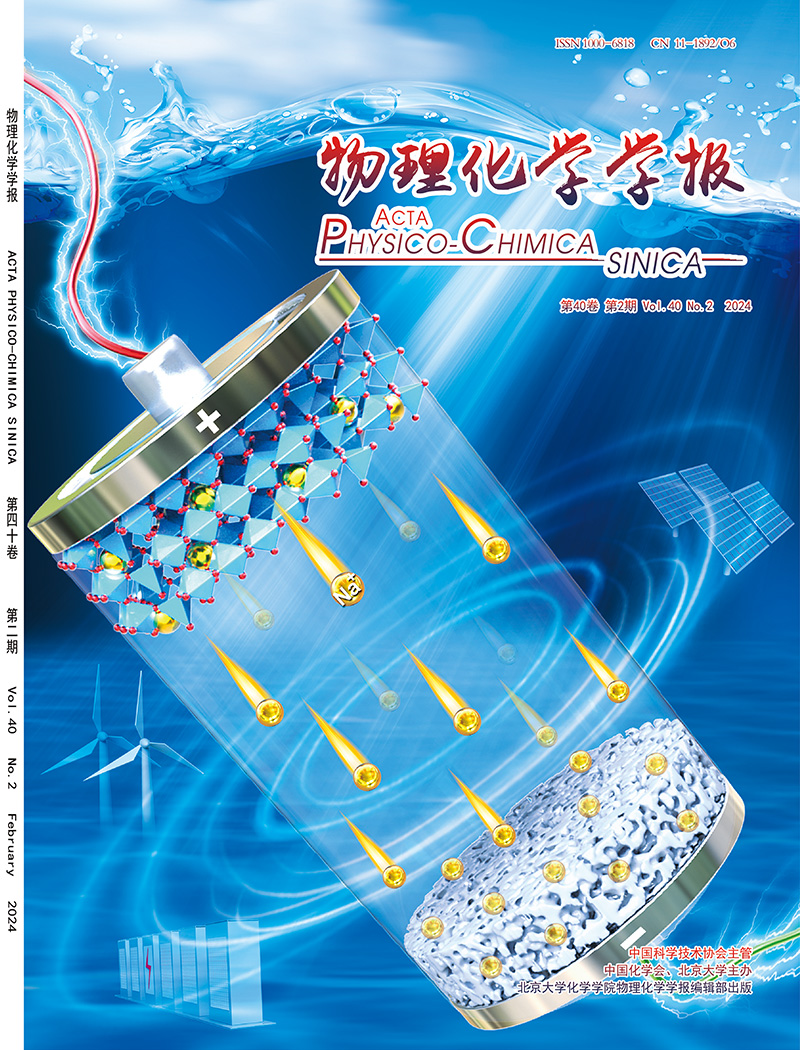提高二维材料基超级电容器容量和速率性能的策略
IF 13.5
2区 化学
Q1 CHEMISTRY, PHYSICAL
引用次数: 0
摘要
随着全球能源格局的深刻变革以及便携式电子设备和电动汽车产业的快速发展,对高性能储能设备的需求日益迫切。在现有的储能技术中,超级电容器因其快速充放电能力、优异的循环稳定性和高功率密度而脱颖而出,能够实现可靠的长期运行以及高效的能量转换和存储。如何提高超级电容器的能量密度,同时保持其固有的高功率密度能力,是当前储能研究面临的一个基本挑战。二维(2D)材料已成为构建高性能超级电容器电极的有希望的候选者。石墨烯、过渡金属氮化物和/或碳化物(MXenes)和过渡金属二硫化物等材料具有独特的层状结构,具有原子厚度、特殊的表面积、高理论容量和卓越的机械灵活性。这些特性使它们特别适合于开发下一代储能设备。然而,纳米片之间固有的范德华相互作用经常导致再堆积现象,严重阻碍了离子传输,从而限制了实际容量和速率性能。因此,合理的材料设计和精确的电极结构工程是克服这些性能限制的必要条件。本文首先探讨了提高二维材料电化学性能的改性策略。研究表明,表面功能化、缺陷工程、异质结构构建等多种修饰方法可以有效增加活性位点、增强电导率、改善假电容特性。这些修改导致电极材料的面积和体积电容的实质性改善。值得注意的是,提高超级电容器能量密度的努力通常需要更高的活性材料质量负载,这必然导致电极结构内更复杂和更长的离子传输途径,从而影响倍率性能。为了应对这一挑战,我们评估了在高质量负载电极中建立离子传输通道的传统方法,包括基于模板的方法、外部场诱导组装技术和三维(3D)打印工艺。然而,这些传统方法通常产生微米或亚微米尺度的孔隙结构,这使得同时实现最佳速率性能和体积电容具有挑战性。为了同时优化面电容、体积电容和速率性能,本文重点介绍了构建纳米级多孔结构的最新创新方法。这些包括毛细管力驱动致密化、层间插入策略、表面蚀刻技术和量子点方法。这些先进的方法旨在为高效离子传输建立三维互联网络,从而加速小型化超级电容器技术的发展,同时实现高能量密度和高功率密度特性。本文章由计算机程序翻译,如有差异,请以英文原文为准。

Strategies for enhancing capacity and rate performance of two-dimensional material-based supercapacitors
With the profound transformation of the global energy landscape and the rapid advancement of portable electronic devices and electric vehicle industries, there is an increasingly urgent demand for high-performance energy storage devices. Among the available energy storage technologies, supercapacitors stand out due to their rapid charge/discharge capabilities, excellent cycling stability, and high power density, enabling reliable long-term operation as well as efficient energy conversion and storage. A fundamental challenge in contemporary energy storage research remains the enhancement of supercapacitor energy density while maintaining their inherent high power density capabilities. Two-dimensional (2D) materials have emerged as promising candidates for constructing high-performance supercapacitor electrodes. Materials such as graphene, transition metal nitrides and/or carbides (MXenes), and transition metal dichalcogenides possess unique layered structures with atomic thickness, exceptional surface areas, high theoretical capacities, and remarkable mechanical flexibility. These characteristics make them particularly suitable for developing next-generation energy storage devices. However, the inherent van der Waals interactions between nanosheets frequently result in restacking phenomena, significantly impeding ion transport and consequently limiting both practical capacity and rate performance. Thus, rational materials design and precise electrode architecture engineering are imperative for overcoming these performance limitations. This review first explores modification strategies for enhancing the electrochemical performance of 2D materials. Studies have shown that diverse modification approaches, including surface functionalization, defect engineering, and heterogeneous structure construction, can effectively increase active sites, enhance conductivity, and improve pseudocapacitive characteristics. These modifications lead to substantial improvements in both areal and volumetric capacitance of electrode materials. Notably, efforts to increase supercapacitor energy density typically necessitate higher active material mass loading, which inherently results in more complex and extended ion transport pathways within the electrode structure, thereby compromising rate performance. In addressing this challenge, we evaluate conventional methodologies for establishing ion transport channels in high mass loading electrodes, including template-based approaches, external field-induced assembly techniques, and three-dimensional (3D) printing processes. However, these traditional methods typically generate pore structures at the micrometer or sub-micrometer scale, making it challenging to simultaneously achieve optimal rate performance and volumetric capacitance. To concurrently optimize areal capacitance, volumetric capacitance, and rate performance, this review emphasizes recent innovative approaches for constructing nanoscale porous architectures. These include capillary force-driven densification, interlayer insertion strategies, surface etching techniques, and quantum dot methodologies. These advanced approaches aim to establish three-dimensional interconnected networks for efficient ion transport, thereby accelerating the development of miniaturized supercapacitor technologies that simultaneously achieve high energy density and high power density characteristics.
求助全文
通过发布文献求助,成功后即可免费获取论文全文。
去求助

 求助内容:
求助内容: 应助结果提醒方式:
应助结果提醒方式:


